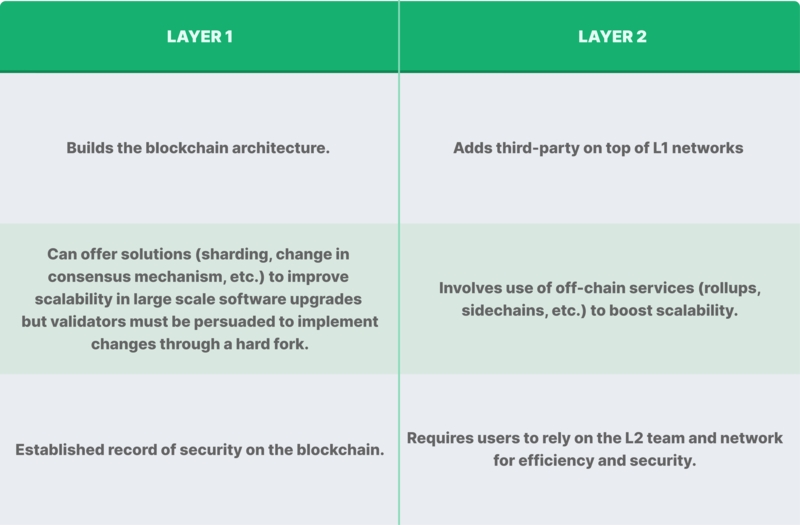
Layer2 Blockchain
Layer 2 (L2) blockchain refers to a secondary protocol or framework built on top of an existing blockchain (usually a Layer 1 or L1 blockchain) to enhance scalability, reduce transaction costs, and improve overall performance. The term "Layer 2" signifies that it operates at a higher level than the base blockchain layer.
Here are some key characteristics and features associated with Layer 2 blockchains:
Scalability: One of the primary purposes of Layer 2 solutions is to address scalability issues that might be present in the underlying Layer 1 blockchain. By offloading certain types of transactions or computations to Layer 2, the network can handle a larger number of transactions per second.
Reduced Transaction Costs: Layer 2 solutions often aim to decrease transaction fees by processing certain transactions off-chain or in a more efficient manner. This can make blockchain applications more cost-effective for users.
Fast Confirmation Times: Layer 2 solutions can provide faster confirmation times for transactions compared to the base layer. This is achieved by leveraging various consensus mechanisms or cryptographic techniques that may not be feasible on the main blockchain.
Interoperability: Layer 2 solutions can be designed to maintain interoperability with the Layer 1 blockchain, allowing assets to be moved seamlessly between the two layers. This interoperability is crucial for maintaining consistency and enabling users to benefit from the security of the underlying blockchain.
Examples of Layer 2 Solutions:
Sidechains: Separate blockchains that run in parallel to the main blockchain but are interoperable with it.
State Channels: Off-chain channels where participants can transact privately and only interact with the main blockchain in case of disputes or final settlement.
Plasma: A framework for creating scalable and secure decentralized applications (DApps) on the Ethereum blockchain.
Security: Layer 2 solutions often leverage the security of the underlying Layer 1 blockchain. They rely on the main chain for certain security assurances, such as finality and immutability.
The significant differences between L1 and L2 networks lies in their role and focus on the blockchain:

Last updated